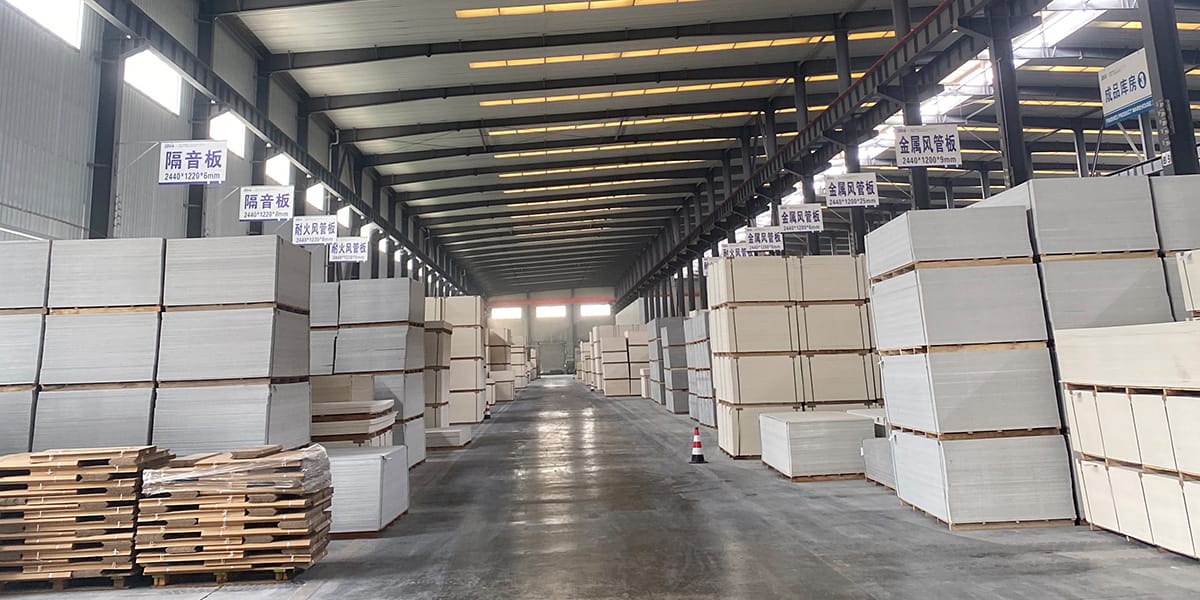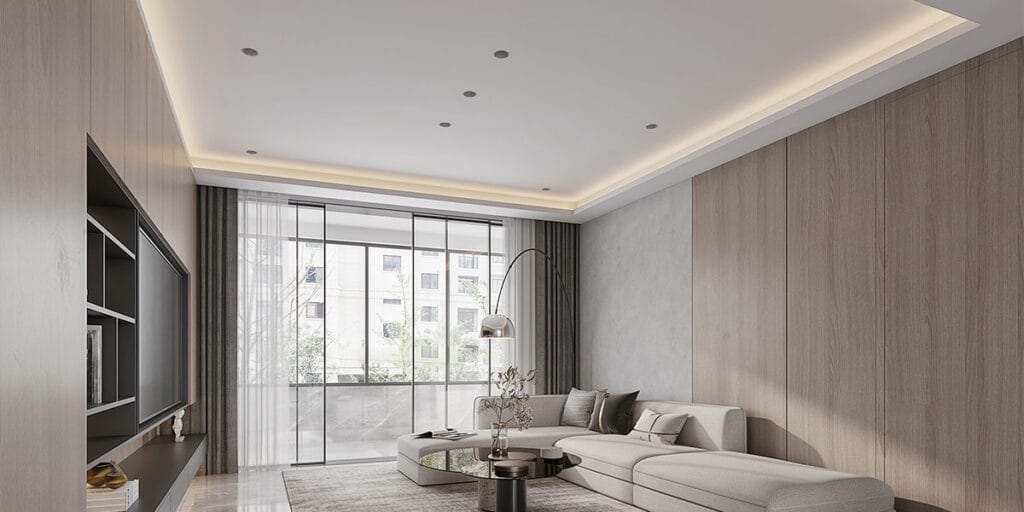
27 Apr Understanding the Environmental Impact of MgO Cement Boards
Table of Contents
MgO cement board is an environmentally friendly choice for modern construction. It offers a superior alternative to traditional building materials. The production of MgO cement board requires less energy, as it is manufactured at lower temperatures compared to lime or silicate cement, resulting in reduced carbon emissions. Additionally, MgO cement board utilises seawater or by-products from salt production, minimising waste and benefiting the environment. These boards are safe, non-toxic, and recyclable, contributing to the creation of sustainable buildings and healthier living spaces.
Key Takeaways
MgO cement boards create much less carbon than usual materials.
They are made from natural things like magnesium oxide.
This lowers waste and helps the environment stay healthy.
MgO boards are safe and do not have bad chemicals.
They make indoor air cleaner and better for people to breathe.
These boards last long, so fewer replacements are needed.
This reduces waste and keeps pollution lower over time.
Using MgO boards can save energy and lower heating costs.
They keep rooms warm or cool without using much energy.
Production and Environmental Benefits
Low-carbon production process
Making MgO cement boards creates much less carbon than other materials. This is because they are made at lower temperatures. For example, regular silicate cement releases about 740 kg of CO2 per tonne. In contrast, MgO boards release only 70 kg of CO2 per tonne. This big difference shows how eco-friendly MgO boards are. By using these boards, you help lower global emissions and support greener construction.
Use of natural and abundant resources
MgO boards are made from magnesium oxide, a mineral found in nature. It is often taken from seawater or made during salt production. This method reduces waste and uses resources wisely. Unlike some materials, MgO boards do not depend on rare or non-renewable resources. Their production follows sustainable practices, making them a good choice for the environment.
Comparison with traditional materials
Compared to materials like gypsum or silicate cement, MgO boards are better for the planet. Gypsum produces 65 kg of CO2 per tonne, slightly less than MgO boards. But gypsum is not as strong or useful as MgO boards. Silicate cement, however, gives off over ten times more CO2 than MgO boards. This big gap shows why MgO boards are a better option. Their low emissions and eco-friendly features make them a great choice for building projects.
Health Benefits of MgO Cement Boards
Safe and asbestos-free materials
MgO cement boards are safe because they do not contain toxins. Unlike older building materials, they are free from asbestos and harmful chemicals. Tests show their components are safe, as seen in the table below:
Material | Found in MgO Boards |
|---|---|
Magnesium oxide | Yes |
Magnesium chloride | Yes |
Perlite | Yes |
Woodchip | Yes |
Fibreglass/Composites | Yes |
Formaldehydes | No |
Silica | No |
Heavy metals | No |
Organic solvents | No |
Asbestos | No |
This mix of materials makes MgO boards non-toxic and better for health. They are safer than many traditional building options.
No harmful chemicals included
MgO boards do not have dangerous chemicals that harm health or nature. They do not release bad gases or pollute the air. This makes them a clean and eco-friendly choice for buildings. Using MgO boards lowers the chance of breathing in harmful substances. This helps keep people safe indoors.
Better indoor air quality
MgO boards help keep indoor air fresh and clean. They let air flow and stop moisture from building up. This prevents mould and mildew, which can cause breathing problems. People with allergies or asthma benefit from this feature. MgO boards create healthier homes and buildings. Their safe materials and mould resistance make them a smart choice for construction.
Durability and Eco-Friendly Features

Long-lasting and tough against weather
MgO cement boards are known for being strong and lasting long. They can handle tough weather like heat, cold, and dampness. Even in these conditions, they stay solid and do not break. Unlike older materials, they do not crack, bend, or wear out easily. This makes them a good pick for buildings that need to last. Using MgO boards means fewer replacements, which helps the planet by cutting waste and pollution from making and moving materials.
These boards are also great at stopping fires. They do not burn and are very fire-resistant. This makes buildings safer and reduces damage from fires. Less fire damage also means less waste, which is better for the environment.
Easy to recycle and less waste
One big eco-friendly feature of MgO boards is recycling. When they are no longer needed, they can be reused. This cuts down on building waste and keeps materials out of landfills. Reusing them also means fewer new resources are needed, which helps the planet.
Making MgO boards creates very little waste. Factories often use leftover materials, like those from salt-making, to make these boards. This saves resources and supports green building goals. By picking MgO boards, you help reduce waste and protect nature.
Stops water, mould, and pests
MgO boards are great at keeping out water, mould, and pests. They do not soak up water, so they do not swell or bend. The table below shows how they handle moisture:
Feature | Description |
|---|---|
Stays strong even after short water exposure. | |
Structural Stability | Keeps its shape even when slightly bent. |
Warping | Does not bend out of shape. |
Swelling | Does not grow bigger when wet. |
Delamination | Layers do not come apart. |
Long-term Moisture Exposure | Not advised for very long water exposure. |
Because they are made from inorganic materials, MgO boards stop mould and mildew from growing. Their natural properties also keep pests away, as they cannot live in these boards. This makes them a smart and safe choice for building in damp or pest-prone areas.
Energy Efficiency and Thermal Properties
Keeping heat in and out
MgO cement boards are great at stopping heat transfer. They help keep buildings warm in winter and cool in summer. This makes them a smart choice for saving energy. Unlike older materials, MgO boards block heat flow better. They help keep indoor temperatures steady, no matter the weather outside. This feature also lowers the need for heating or cooling systems, saving energy.
Saving energy in buildings
Buildings with MgO boards use less energy for heating or cooling. These boards reduce the need for air conditioning or heaters. This means lower electricity bills and less energy use. MgO boards help create eco-friendly buildings by cutting energy waste. Choosing these boards is good for the planet and saves money.
Cutting heating and cooling costs
MgO boards help reduce heating and cooling expenses. They keep indoor temperatures steady without using much energy. This lowers costs and supports green building goals. Studies show MgO boards save energy over time. They are strong and last long, making them a smart investment. Using MgO boards is a cost-effective way to build sustainable homes and offices.
Sustainability and Environmental Concerns
Getting raw materials
MgO cement boards use eco-friendly raw materials. They mainly use magnesium oxide, which comes from seawater or leftover salt-making materials. This method cuts waste and uses natural resources wisely. Unlike older materials that rely on limited supplies, MgO boards support green and sustainable goals.
The demand for MgO boards shows their role in green building. In 2023, the market value is USD 2.1 billion. By 2032, it is expected to grow to USD 4.3 billion, with an annual growth rate of 8.3%. This rise proves their eco-friendly benefits and fit with green building rules.
Metric | Value |
|---|---|
Current Market Size (2023) | USD 2.1 billion |
Projected Market Size (2032) | USD 4.3 billion |
Compound Annual Growth Rate (CAGR) | 8.3% |
Possible environmental issues
MgO boards are good for the planet but have some risks. The raw materials might have harmful metals like lead or arsenic. These metals can mix with water and harm nature.
To avoid problems, handle and dispose of MgO boards carefully. Factories should also follow eco-friendly steps when making them. Fixing these issues keeps MgO boards a green choice for building.
Need for careful production
Making MgO boards responsibly is very important. Factories should use low-emission methods and handle materials safely. Reusing leftovers, like salt by-products, makes them even greener.
You can help by buying from companies that care about the planet. This ensures MgO boards stay durable and eco-friendly. Supporting responsible production helps create greener buildings and healthier spaces.
MgO cement boards are a green choice for building today. They are made with less carbon, are safe, and can be recycled. These boards bring many advantages like cleaner air indoors, saving energy, and cutting waste. They last a long time, so fewer replacements are needed. The table below shows their eco-friendly features and benefits:
Feature | Details |
|---|---|
MgO boards release less carbon than materials like Portland cement. | |
Safe Materials | They do not have harmful chemicals like formaldehyde or VOCs, making indoor air healthier. |
Strong and Long-lasting | MgO boards resist fire, water, and mould, lasting longer and reducing waste. |
Reusable and Recyclable | When no longer needed, they can be recycled or broken down, lowering landfill waste. |
Energy Saving | They keep heat in or out, cutting energy use for heating and cooling. |
To make the most of these benefits, choose MgO boards made responsibly. This keeps them a smart and eco-friendly option for building projects.
FAQ
Why are MgO cement boards good for the environment?
MgO boards are eco-friendly because they produce less carbon. They use natural materials like magnesium oxide from seawater. These boards can be recycled, are safe, and cut down on waste. This makes them a great green choice for building.
Can MgO boards handle wet areas?
Yes, MgO boards are good in damp places. They stop water, mould, and mildew from causing damage. Their materials do not soak up water. But they should not stay wet for a long time to stay strong.
Are MgO boards safe to use indoors?
Yes, MgO boards are very safe for inside use. They do not have harmful chemicals like asbestos or formaldehyde. They also do not release bad gases. These boards help keep the air clean and are great for people with allergies.
How do MgO boards save energy?
MgO boards keep heat in during winter and out in summer. They stop heat from moving through walls, keeping rooms comfortable. This means less need for heaters or air conditioners, saving energy and money.
Can MgO boards be reused?
Yes, MgO boards can be recycled and used again. When no longer needed, they can be broken down and reused. This helps reduce waste and supports eco-friendly building methods.
